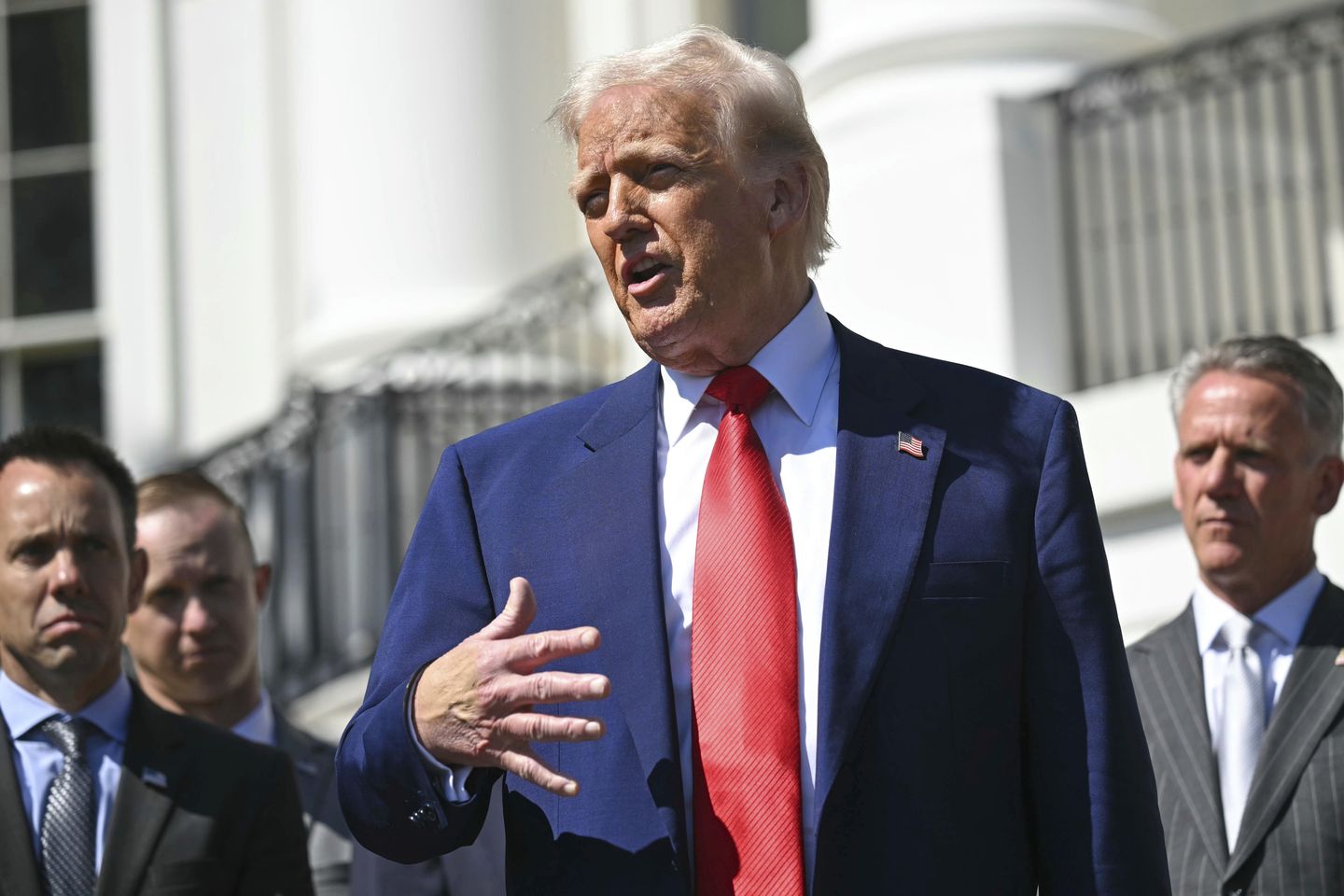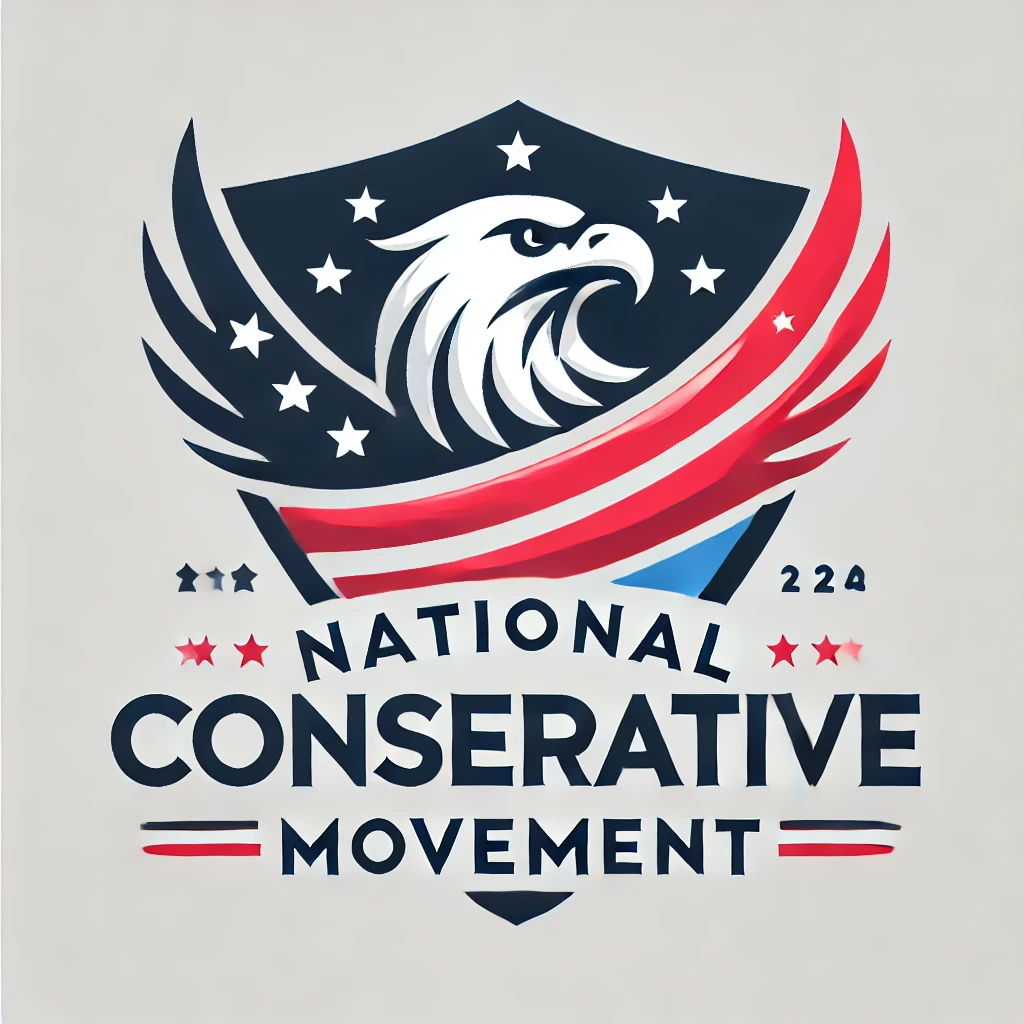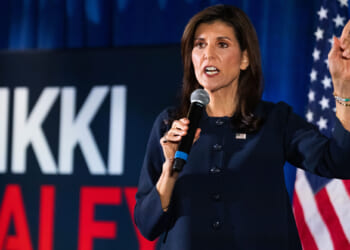
President Trump on Wednesday set in motion a plan to revitalize the nation’s military and civilian “maritime dominance.”
“We’re going to be spending a lot of money on shipbuilding,” Mr. Trump said when signing an executive order in the Oval Office. “We’re way way way behind. We used to build a ship a day and now we don’t do a ship a year, practically, and we have the capacity to do it.”
The order creates the Maritime Action Plan that outlines a strategy to “restore and create sustained resiliency for the American maritime industry” and make sure it’s the leading fleet in arctic waterways.
The U.S. fleet of commercial ships will be increased internationally and domestically, according to the order.
It also establishes a Maritime Security Trust Fund to ensure there is always funding for maritime programs and a shipbuilding financial incentives program to push private investment into the country’s shipbuilding, along with developing Maritime Prosperity Zones to “incentivize investment in waterfront communities.”
“Up until now, government procurement processes and over-regulation have hindered private industry’s ability to build vessels on time and on budget — this order reverses that trend,” said a fact sheet from the White House.
The president directed Defense Secretary Pete Hegseth to find ways to expand the country’s maritime industrial base and ensure the fleet stays updated. He called for United States Trade Representative Jamieson Greer to make recommendations about China’s anti-competitive actions within the industry and tasked Homeland Security Secretary Kristi Noem to ensure the Harbor Maintenance Fee and other fees are collected from foreign ships entering the U.S.
Mr. Trump first stated his goal of reviving America’s shipbuilding industry during his joint address to Congress last month, where he announced the creation of a White House office dedicated to the industry.
The White House on Wednesday said the office would be called the Office of Maritime and Industrial Capacity at the National Security Council.
According to the Center for Strategic & International Studies, Chinese shipbuilders collectively account for over 50% of merchant cargo carrying capacity, a massive increase from just 5% in 1999.
U.S. shipbuilding, which is focused on Navy vessels, is in decline, according to the Maritime Administration. The decline was brought on by rising costs, reduced subsidies for domestic commercial shipbuilding and the rise of foreign shipbuilding, especially in Asia.
The Shipbuilders Council of America was quick to support Mr. Trump’s order, saying it “will provide a powerful environment to rebuild our shipbuilding capacity and build the fleet of the future.”
“With this executive order, it is clear that President Trump and his administration are deeply committed to reenergizing and investing in our nation’s shipyards and we are eager to begin this important work alongside policymakers and industry partners to restore America’s shipbuilding strength for the security and growth of our nation,” SCA President Matthew Paxton said in a statement.
Mr. Trump signed two orders modernizing different aspects of the Defense Department — overhauling defense procurement and the foreign defense sales system to supply better equipment to U.S. allies.
The president also advanced his deregulation agenda.
Mr. Trump directed federal agencies to get rid of three regulations on the books for every new one they implement, targeting “illegal or unconstitutional” rules for elimination.
“These are regulations that are currently in effect that we believe blatantly violate the law, blatantly violate Supreme Court precedent or otherwise just blatantly illegal,” said White House staff secretary Will Scharf as Mr. Trump signed the three-for-one executive order.
Mr. Trump called it “a big deal.”
“It’s really very important that we get these memorialized by Congress,” he said. “For the long haul.”
The order is aimed at reducing the administrative state that Mr. Trump has long complained chokes economic growth and makes life difficult for Americans.
It is a more ambitious version of his first-term mantra of “one-in, two-out” deregulatory goal, telling department heads they had to eliminate two regulations for each new one they adopted. Now the number of rules that must go out the window has been expanded by one.
Mr. Trump claimed his first-term policy led to net cost savings and regulatory reductions across several agencies despite deep resistance and inherent issues in the rule making process that make it difficult to scuttle rules.
It’s unclear if Mr. Trump’s more expansive vision can succeed where even the more modest effort faces obstacles.
In 2017, the White House claimed that it reduced an average of 22 rules for every rule it had adopted. By 2020, that ratio had dropped to a more modest 3.2-to-1.












